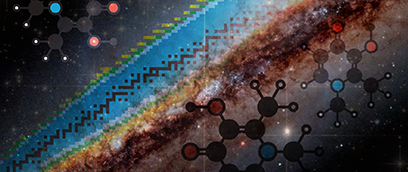What happens when a star dies?

Share this article:
Share this article:
There is a large community of scientists looking into what happens when a star explodes.
What they are interested in—supernovas and neutron star mergers—are energetic events occurring at the end of a star’s life. Such processes are responsible for the production of approximately half of the abundance of elements in the universe heavier than iron (Fe)—such as the gold or silver in your cell phone.
Scientists need to know a lot about rare, short-lived isotopes to understand how heavy elements are created in these processes. “We need basic nuclear properties for hundreds of isotopes at the same time in order to reproduce what happens during these explosions,” said Sean Liddick, associate professor of chemistry at FRIB and in MSU’s Department of Chemistry, and FRIB associate director for experimental science.
Much of the needed information can be measured using rare isotopes produced at FRIB, such as an isotope’s mass, the time it takes for an isotope to decay, or how it decays. Yet one piece of information, the rate at which a neutron is captured onto a rare isotope, can’t be directly measured. Instead, the rate is constrained by experimental measurements. It is the subject of ongoing research conducted by Liddick and his collaborators.
Research has three components
Liddick is principal investigator conducting this research. He is working with co-investigator Artemis Spyrou, professor of physics at FRIB and in the Department of Physics & Astronomy, and a team of their graduate students and postdoctoral researchers. Their work grew out of a collaboration among MSU and University of Olso researchers. It has extended to U.S. national laboratories including Lawrence Livermore National Laboratory (LLNL) and Los Alamos National Laboratory (LANL).
Their research has three components. The first, as described above, is to help scientists understand what happens in stars to create heavy elements.
In the second component, the objective is to infer the probability for a short-lived isotope to capture a neutron undergoing a reaction of interest for national stockpile stewardship. In the absence of nuclear testing, the reliability of the nation’s current nuclear stockpile rests on the quality and availability of nuclear data used for interpreting nuclear events. The matching of prior nuclear test data with models informed by existing nuclear data validates the capability to predict performance and the effects of any intentional modifications. In some cases, the same probability for capturing a neutron can be used for both astrophysics and stockpile stewardship.
A third research objective is workforce development. “We have a lot of grad students and postdoctoral researchers here at FRIB, and one of our goals is to expose them to the national laboratory system, to get them engaged with national lab staff scientists,” Liddick said. “We provide national laboratories like LANL with a recruitment pool of high-quality candidates. Working in these laboratories offers our students and postdocs an attractive career trajectory.”
One such former student is Rebecca Lewis, an MSU graduate who did some of her thesis work at LANL, specifically at Los Alamos Neutron Science Center.
“I focused on better understanding the codes that we use to calculate neutron-capture cross sections,” she said. “My time at LANL allowed me to ‘test drive’ working at a national lab. I met so many researchers who had interesting projects and were always thinking of big new ideas to try. It made me realize that I have a passion for supporting the laboratory infrastructure that allows these amazingly smart people to work through those big ideas.” Doing research in a national laboratory also helped propel her toward her present career.
Today, Lewis works in private industry at a nuclear start-up where “I am responsible for our radiological facilities, which is a new and exciting way to push nuclear science forward by focusing on the infrastructure that underpins the research, development, and production phases.” In this position, she said, “I use the skills and relationships that I built every day.”
The National Nuclear Security Administration at the U.S. Department of Energy recently awarded Liddick and his team a renewal grant to continue this research over the next three years.
Kathleen VanderVelde is a freelance writer.
Michigan State University (MSU) operates the Facility for Rare Isotope Beams (FRIB) as a user facility for the U.S. Department of Energy Office of Science (DOE-SC), supporting the mission of the DOE-SC Office of Nuclear Physics. Hosting what is designed to be the most powerful heavy-ion accelerator, FRIB enables scientists to make discoveries about the properties of rare isotopes in order to better understand the physics of nuclei, nuclear astrophysics, fundamental interactions and applications for society, including in medicine, homeland security and industry.
The U.S. Department of Energy Office of Science is the single largest supporter of basic research in the physical sciences in the United States and is working to address some of today’s most pressing challenges. For more information, visit energy.gov/science.

